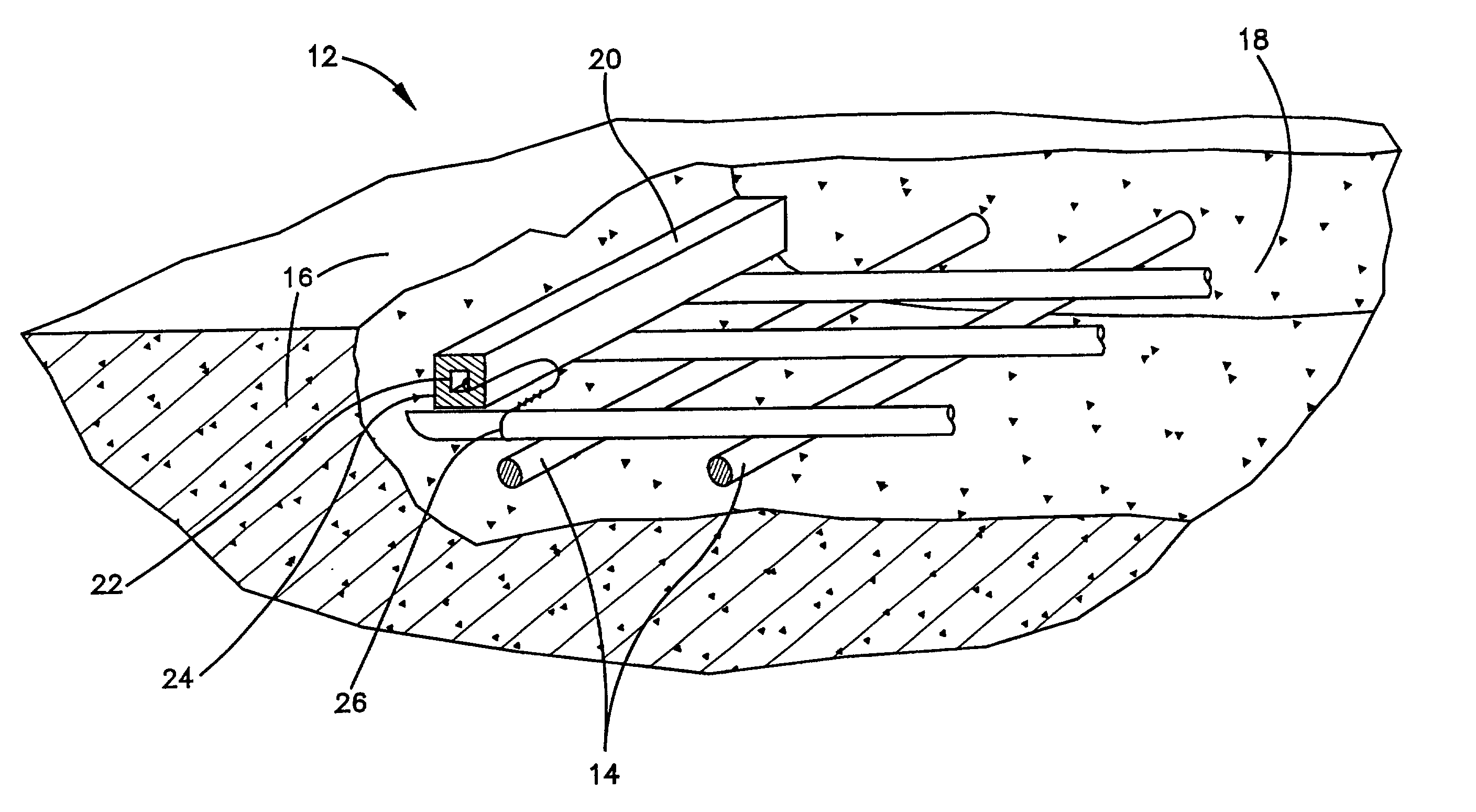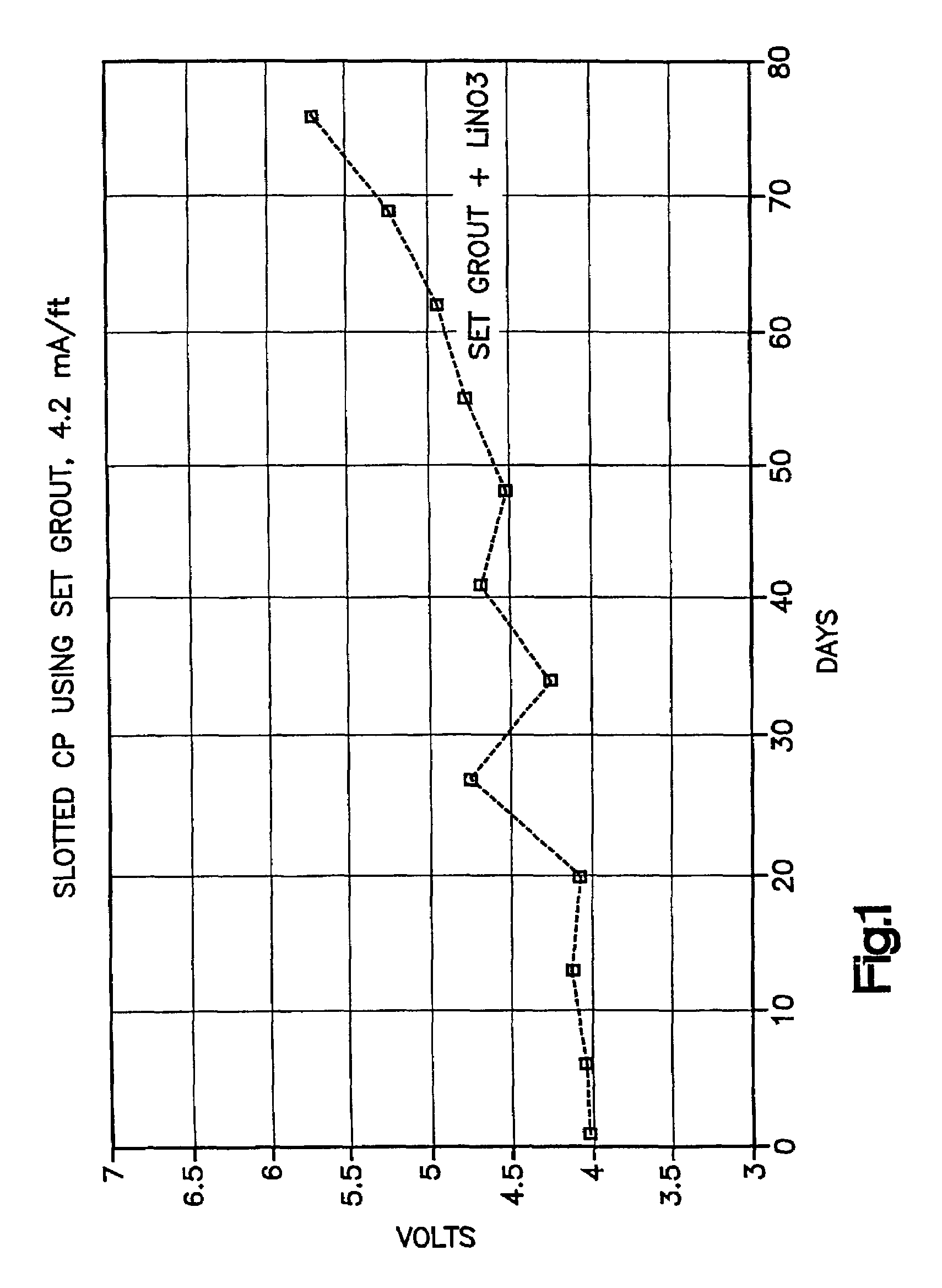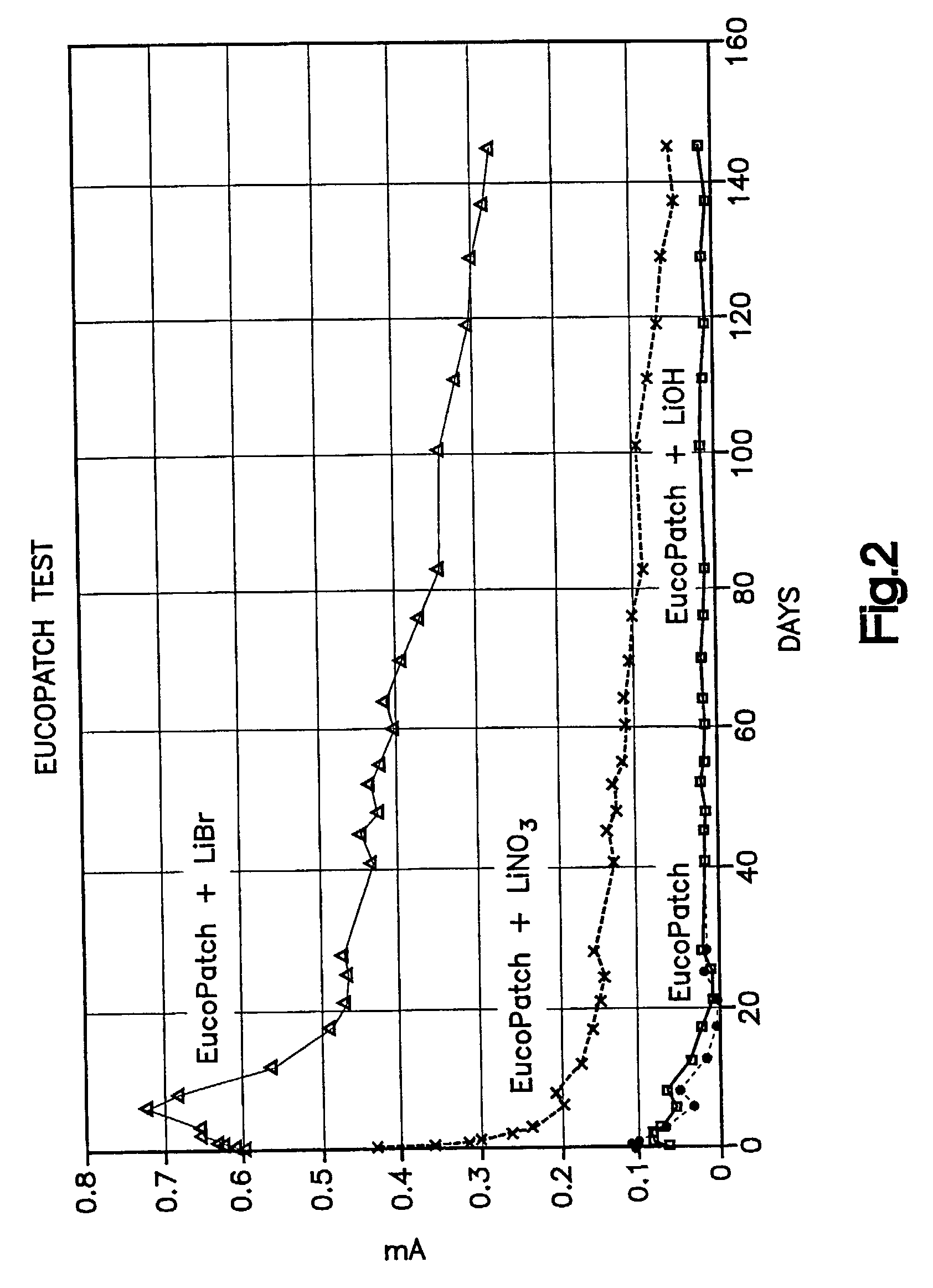Cathodic protection system
a protection system and cathode technology, applied in the field of cathode protection systems, can solve the problems of cracking and delamination, destroying the ability of concrete to keep steel in a passive, or non-corrosive state, and contaminated concrete over a number of years, and achieve the effect of improving the performance and service life of discrete anodes
- Summary
- Abstract
- Description
- Claims
- Application Information
AI Technical Summary
Benefits of technology
Problems solved by technology
Method used
Image
Examples
example i
[0048]A concrete block was constructed with dimensions of 12×12×4 inches (30.5×30.5×10.2 centimeters). The block contained four 9 inch (22.9 centimeters) long No. 6 (1.9 centimeters diameter) reinforcing bars spaced on 3 inch (7.6 centimeters) centers. There was a 1 inch (2.54 centimeters) depth of cover measured from the working surface of the block. The reinforcing bars were electrically connected forming a grid. Chloride was admixed into the concrete to achieve a total (acid soluble) chloride concentration of 20 pounds per cubic yard (about 0.52% chloride by weight of concrete). The mix proportions of the concrete were as follows:
[0049]
Type 1 Portland Cement (Essroc) 715 lb / yd3 (425 kg / m3)Frank Road Sand Fine Aggregate1010 lb / yd3 (600 kg / m3)No. 57 American Aggregates Limestone1830 lb / yd3 (1090 kg / m3)Water 285 lb / yd3 (170 kg / m3)AirAbout 6%
[0050]Following a 24-hour mold curing period, the block was placed in a controlled temperature / humidity room maintained at 100% relative humidit...
example ii
[0057]A steel reinforced 12×12×4-inch (30.5×30.5×10.2-centimeter) concrete block was constructed using concrete with the following mix proportions:
[0058]
Type 1 Portland Cement (Essroc) 715 lb / yd3Frank Road Sand (SSD)1010 lb / yd3No. 57 American Aggregates Limestone (SSD)1830 lb / yd3Water 285 lb / yd3Air6% ± 2%
[0059]The block contained four #6 reinforcing bars 0.75-inch (1.9-centimeter) diameter by 9 inches (22.9 centimeters) long. The reinforcing bars were spaced 3 inches (7.6 centimeters) apart and parallel to each other with 2 inches (5.1 centimeters) of cover between the bars and the top surface of the block. The block was constructed in 1996, and was maintained outdoors in Ohio until this experiment.
[0060]For this experiment, four 2-inch (5.1 centimeter) diameter by 2-inch (5.1 centimeter) deep holes were cut in the block, each hole being 3-inch (7.6 centimeter) centerline distance from a corner of the block. A No. 18-gage stranded copper wire connection was attached to each of four ...
example iii
[0065]This Example illustrates the embodiment of FIG. 3. FIG. 3 shows a steel reinforced concrete structure 12, the reinforcement 14 of which is subject to corrosion due to carbonation or ingress of chloride ions from deicing salt or set accelerators. The original concrete 16 of the structure may still be structurally sound, but may be chloride contaminated. A pothole or excavation 18 is representative of damage caused by corrosion of the reinforcement 14, wherein corrosion products have resulted in expansion of the reinforcement 14 and subsequent cracking and delamination of the concrete 16. The concrete 16 is thus in need of patching.
[0066]In the present invention, an assembly 20 is placed in the excavation 18 for the express purpose of preventing corrosion and subsequent delamination of the original concrete 16 outside of the excavation 18. An end of the assembly 20 is shown cut away in cross section to better illustrate the features of the present invention. The assembly 20 cons...
PUM
| Property | Measurement | Unit |
|---|---|---|
| concentration | aaaaa | aaaaa |
| concentration | aaaaa | aaaaa |
| diameter | aaaaa | aaaaa |
Abstract
Description
Claims
Application Information
 Login to View More
Login to View More - R&D
- Intellectual Property
- Life Sciences
- Materials
- Tech Scout
- Unparalleled Data Quality
- Higher Quality Content
- 60% Fewer Hallucinations
Browse by: Latest US Patents, China's latest patents, Technical Efficacy Thesaurus, Application Domain, Technology Topic, Popular Technical Reports.
© 2025 PatSnap. All rights reserved.Legal|Privacy policy|Modern Slavery Act Transparency Statement|Sitemap|About US| Contact US: help@patsnap.com



